Should You Expand to Sell on Ecommerce Marketplaces? Here’s How to Decide

Some of the biggest websites in the world are online marketplaces.
Platforms like Amazon, Etsy, Walmart, and AliExpress lure ecommerce business owners with the promise of reaching their established customer bases.
But while marketplace commerce has its advantages, it’s not easy to sell inventory through multiple channels nor maintain strong profit margins to ‘lowest-price’-obsessed customers.
Unsure whether to sell through marketplaces as you scale? Here we’ll share the six top ecommerce marketplaces to consider, plus bonus tips to make sure you’re choosing the right one for your business.
We’ll cover:
- What is an ecommerce marketplace?
- How do ecommerce marketplaces work?
- The benefits of listing products on a marketplace
- 6 top online marketplaces to consider
- How to sell products through a marketplace
An ecommerce marketplace is a place for shoppers to buy products from a wide assortment of brands. Think Amazon, Etsy, or Facebook Marketplace.
People visiting these websites can discover endless new products, checkout, and receive items from multiple brands, all within one platform.
With modern customers expecting ease and convenience as table stakes, it’s no surprise that marketplace use is on the rise. Almost half of shoppers start a product search by heading to an ecommerce marketplace. And some 63% of ecommerce transactions take place through one.
As you might expect, the process for selling through a marketplace differs slightly from your owned ecommerce channel:
- You upload your product catalog and create a virtual storefront on the marketplace.
- A customer purchases the item via the marketplace (where purchase experience is centered around product discovery).
- The marketplace handles purchase confirmation emails and passes order details through to your order management system.
- You fulfill the order and ship it to the customer’s home.
This process can be tweaked slightly if you’re working with 3PLs. Many marketplaces allow brands to store inventory at one of their warehouses.
Fulfilled by Amazon (FBA), for example, handles the picking, packing, and shipping of items ordered through its marketplace. All your brand needs to do is provide the inventory for them to do so.
#cta-paragraph-pb#Build as many pages as you like with Shogun Page Builder Advanced. The sky’s the limit for ecommerce brands that are scaling rapidly—more users, more pages, more storefronts, and less hassle.Learn more
Now we know how an ecommerce marketplace works, let’s take a look at why many businesses choose to sell their products through one.
1. Tap into large customer bases
Amazon is the 13th most popular website in the world, beating Netflix, Reddit, and TikTok.
But people don’t visit marketplaces to be entertained. List your inventory on Amazon and get the chance to reach the 63% of people who make the marketplace their first stop when purchasing a new product.
“We chose Amazon specifically because they’re the largest ecommerce marketplace in the U.S. Our products are getting exposed to millions of customers all over the world.”
— Jean Gregoire, founder and CEO of Lovebox
Take it from Cupshe, an ecommerce business that sells swimwear and generated $250 million in 2020 alone. Part of its success was due to marketplaces. Senior marketing director Jessie Han says 70% of its sales come from its own site; the other 30% from Amazon.

#cta-visual-pb#<cta-title>Need an ecommerce page builder tool that can keep up with your growth?<cta-title>The sky’s the limit for ecommerce brands that are scaling rapidly—more users, more pages, more storefronts, less hassle.Learn more
2. Leverage their advertising
The majority of marketplaces don’t stock their own products. Their business model relies on other brands using its website to sell their products.
That’s good news for ecommerce brands with limited advertising resources—both in terms of cash and knowledge. Many marketplaces run ads to promote the products sold on its site.
“Amazon provides a wide range of marketing and advertising tools for brand owners that can provide visibility and earn customers much more quickly than if you rely solely on traditional networking and social media channels.”
— Ryan Michael Faist, founder and CEO of Peace Beards
Walmart, for example, runs Facebook ad campaigns to drive traffic toward its website. The ads promote third-party products—wherein Walmart absorbs the cost.
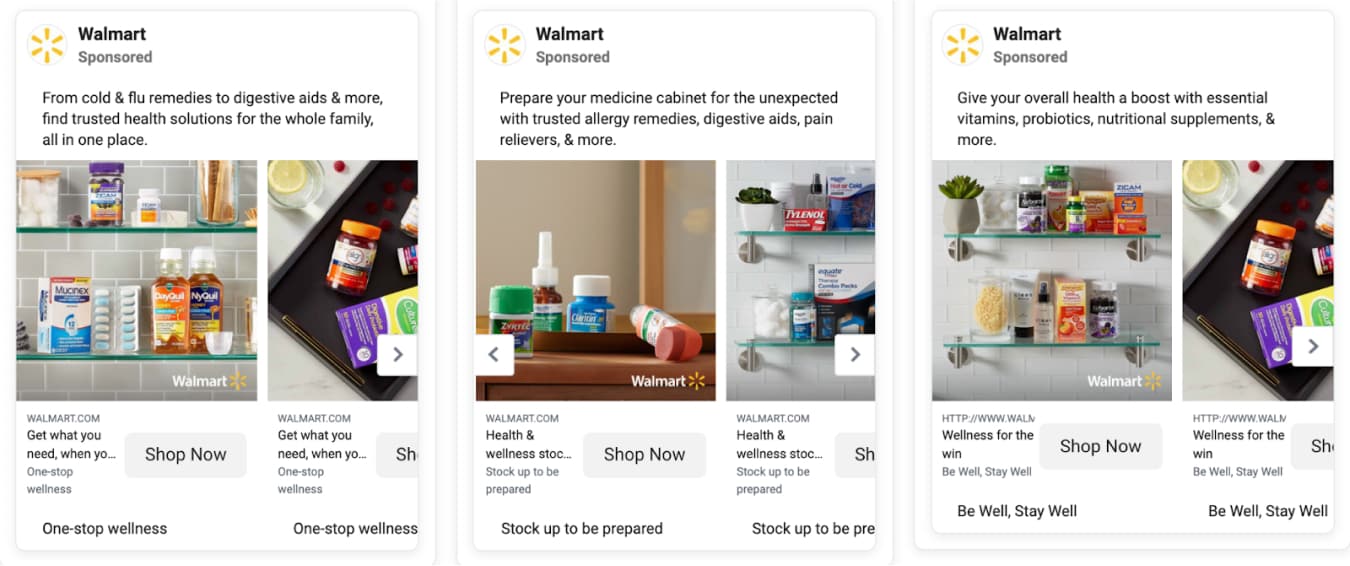
3. Take advantage of familiarity
There are many things a shopper considers when shopping online. One of them is trust. Do they trust a given brand with their credit card information? Is the product worth the price?
Marketplaces often have the advantage here. Some 37% of people prefer to make repeat purchases through online marketplaces because they know exactly what they’re getting. The site is familiar to them, unlike a direct-to-consumer website for a brand they’ve never heard of.
The same trust continues through the returns process (if they get that far.) Some people buy items online knowing they’ll later return it—like ordering clothes in different sizes in case one doesn’t fit.
Familiarity with the returns process—and trust in the fact they’ll get their money back—makes it easy for shoppers to take the plunge.
4. Quickly and easily test products
Launching a new brand or product? Quickly get proof of concept by listing it for sale on a marketplace.
Aside from the time it takes to upload and optimize your product listing, there are no upfront costs. Marketplaces already have the commerce infrastructure to take payment from customers.
Invest in ecommerce software, site development, and marketing once you have proof that the product sells—or simply order up the extra inventory for the product you’re expanding your existing lines with after you’ve validated the new addition.
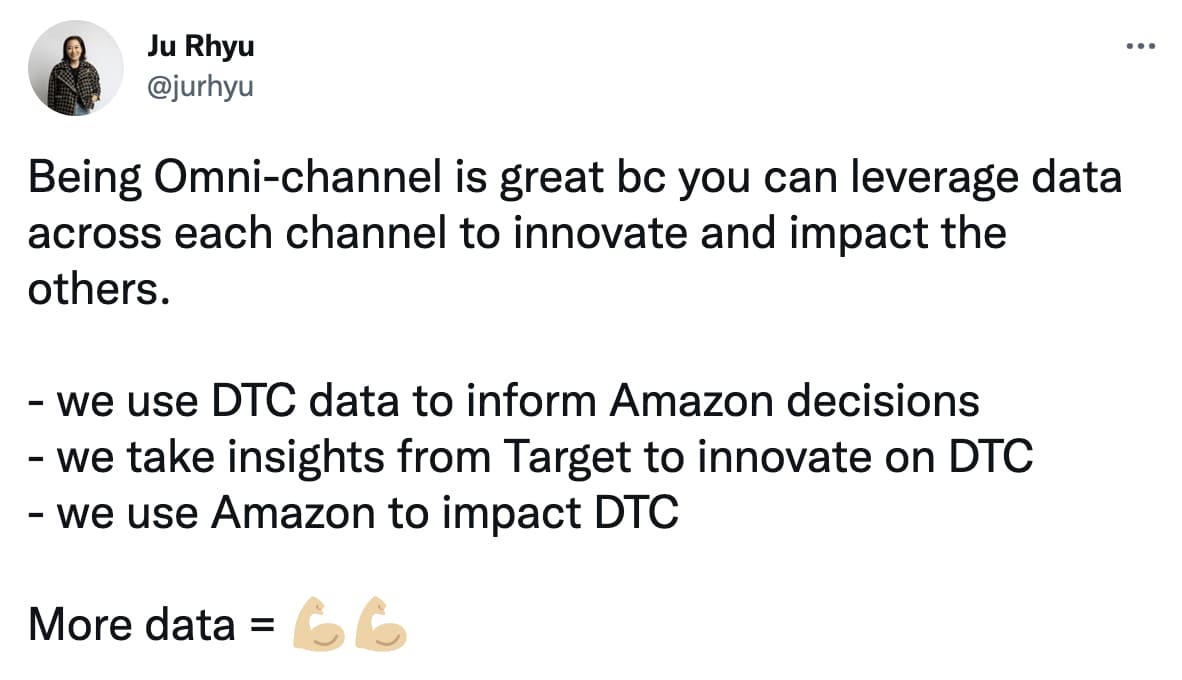
5. Reach international customers
With ecommerce, your customer base isn’t limited to your local area. It’s possible to reach customers on the other side of the world, fulfilling orders within a matter of days.
Yet expanding internationally is a challenge for many direct-to-consumer businesses. You’ll need to deal with imports and exports, currency exchange rates, and the technical infrastructure required to support them.
Selling your products through a global marketplace, however, gives your business the chance to plug into pre-existing supply chains and logistics networks—especially if you’re using their fulfillment services.
With Amazon FBA, for example, merchants can stock inventory in warehouses across the US, Canada, and Europe. Bulk deliver stock to its warehouse and use Amazon’s fulfillment service to distribute those products to international customers.
Are you convinced to test marketplaces for your ecommerce business? Here are six of the best online marketplaces to consider.
1. Amazon
It may have started as an online bookstore, but ecommerce giant Amazon now lists items in a range of categories. Its 6.9 million sellers lend the marketplace’s humongous audience to promote their own products, generating $367.19 billion in revenue each year.
Amazon has a reputation for being the arch nemesis of DTC brands, as Tim Masek, founder of 1-800-D2C explains: “For the longest time, traditional brand marketers were scared of Amazon, thinking it would harm brand equity for a D2C business.
“Now that perception has started to shift as D2C owners and operators are starting to acknowledge real-life customer behavior.
“Amazon is not D2C’s enemy. It’s actually a very profitable and scalable channel that connects your customers to you as directly as possible.”
— Tim Masek, founder of 1-800-D2C
Here’s our guide on how to start selling on Amazon.
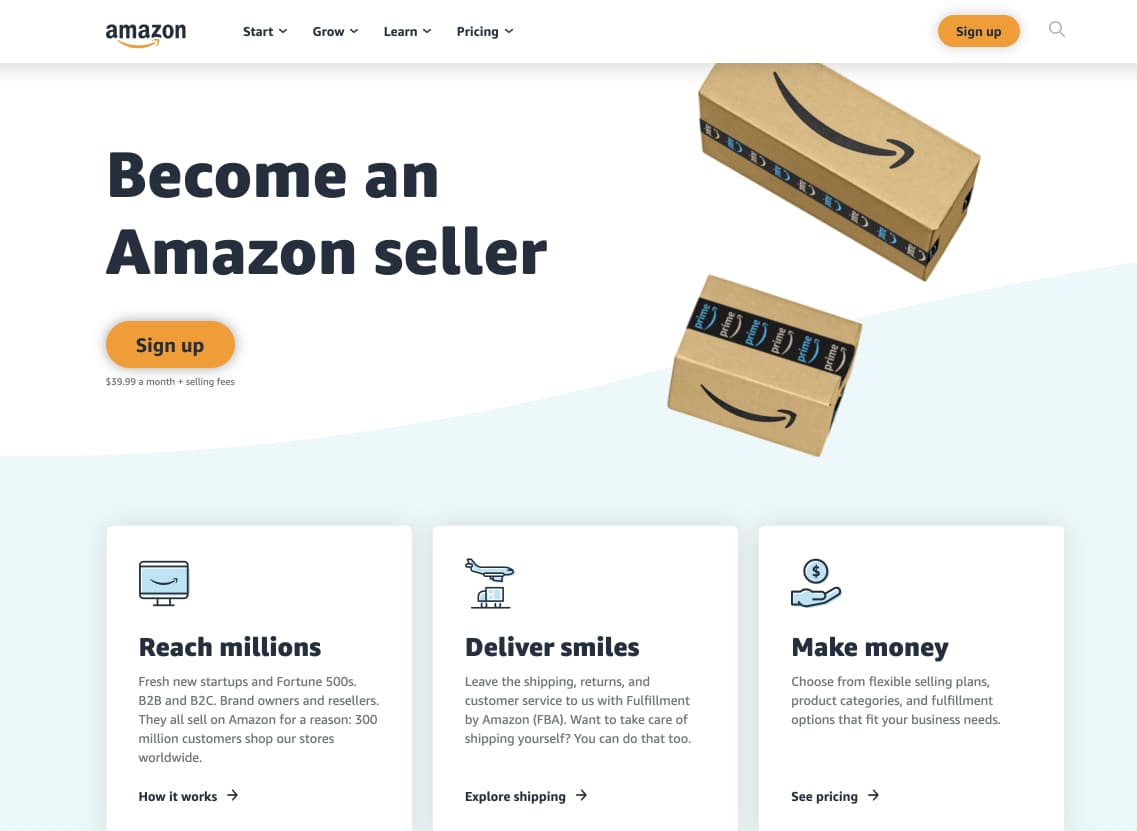
There are various costs to take into consideration when selling through Amazon, including:
- Selling plan. Small businesses—those selling small quantities through the marketplace—pay $0.99 per unit they sell. For the Professional plan, designed for larger businesses, Amazon charges a flat fee of $39.99 per month, regardless of how many units they sell.
- Referral fees. This ranges from 8% to 15% of the product price, depending on the category.
- Fulfillment fees. If you’re using the FBA service, fulfillment fees depend on the weight and size of the parcel, starting from $2.82 per product. Amazon also charges an inventory fee if products sit on their shelves and remain unsold for long periods of time.
- Refund fees. Should a product sold through its marketplace get returned, Amazon will refund the customer and pass on the money to your business, claiming a refund administration fee of $5 or 20% of the refund amount, whichever is smaller.
2. Walmart
Walmart is the world’s largest omnichannel retailer. With over 11,000 brick-and-mortar stores worldwide, its online marketplace is yet another place for brands to sell products to Walmart’s established customer base.
The Walmart marketplace launched back in 2009 as a way for the retailer to sell third-party products alongside its own inventory. You’ll now find inventory from more than 151,000 marketplace sellers, all under one roof.
“Walmart’s Everyday Low Prices (EDLP) guarantee appeals to customers who are shopping for low-cost merchandise. Brands and retailers can reach a new client base that they might not have been able to reach on Amazon.com or their own website otherwise.”
— Gerrid Smith, CMO of Joy Organics
Here’s how to start selling products via Walmart marketplace:
- Apply to join the Walmart marketplace.
- Once approved, sign the retailer contract and complete your profile.
- Choose a full-service integration to add products to your Walmart storefront. Options include BigCommerce, Shopify, and SellerCloud.
- Request a final review and wait for your products to go live.
One advantage of selling on Walmart marketplace is that there’s no setup or monthly fees. Third-party sellers pay a referral fee for each item they sell through the marketplace, ranging from 6% to 15% depending on product category.
To succeed when selling on Walmart, the online retailer offers additional services which come at an extra cost:
- Sponsored product ads. Help people find products faster by investing in sponsored product ads across the marketplace. There’s a minimum monthly ad spend of $1,000 for these ads.
- Walmart fulfillment service (WFS). Ship inventory to a Walmart warehouse and offer fast, two-day delivery and premium customer service with WFS. Prices start at $3.45 with a fixed monthly storage fee for unsold products.
3. Etsy
Etsy is another marketplace to consider if you’re looking to tap into prebuilt customer bases. The platform has 5.2 million online sellers that serve 81.9 million buyers, spending a collective $1.3 billion in revenue through the marketplace.
Brands that do well on Etsy sell a certain type of product. Homeware, jewelry, and craft supplies are amongst the most popular purchase categories in its marketplace.
- Visit Etsy.com and hit “Open your Etsy shop”.
- Build your storefront. Enter your language, currency, country, and brand name.
- Upload products to your Etsy storefront.
- Choose a shipping method. (Unlike other marketplaces, Etsy doesn’t offer a fulfillment service.)
- Add your bank details.
- Customize your storefront with a profile photo, banner, and shop policy.
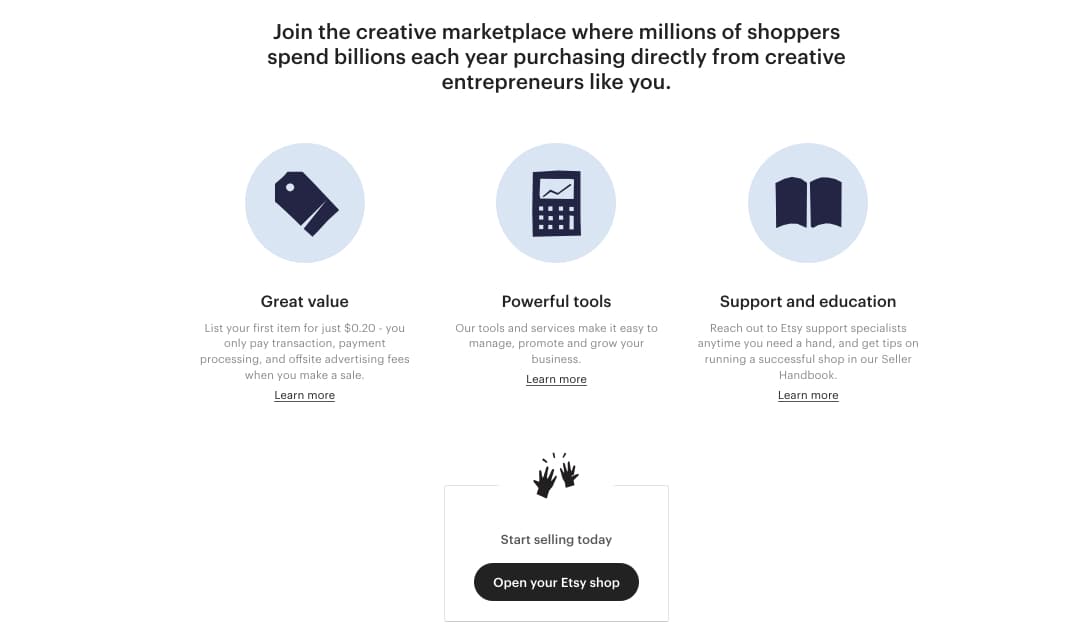
Budget the following costs when using Etsy to sell products:
- Transaction fees. Sellers pay a 5% transaction fee to Etsy whenever they sell a product through its marketplace. Merchants in some countries also pay a regular operating fee, ranging from 0.25% in the UK to 1.1% in Turkey.
- Listing fees. It’ll cost you $0.20 to add a new product listing to Etsy. Listings are active for four months and the fee is payable regardless of whether the product sells.
- Payment processing fees. Get paid directly into your bank account or accept Etsy Payments—the latter of which takes 4% of an item’s revenue, plus a $0.20 fee, when processing.
- Currency conversion fees. Since Etsy does business in US dollars, you’ll be charged a 2.5% conversion fee when selling products in another currency.
#cta-paragraph-pb#Read More: Shopify vs. Etsy: Choosing the Best Platform For Your Online Store
4. eBay
eBay is widely credited as being one of the first online marketplaces. Since its launch back in 1995, the marketplace has only grown in popularity.
eBay now has 159 million monthly active buyers, contributing to a gross merchandise volume of $22.1 billion. Shoppers use the site to purchase products in a wide range of categories—from high-value collectibles to old clothing.
Here’s how to start selling products on eBay:
- Register for a business account.
- Add your store policies, such as shopping, return, and payment policies.
- Upload your inventory. Integrations with BigCommerce and Shopify save time here.
Businesses are advised to create an eBay store when using the channel to sell inventory. There are five plans to choose from, each offering different discounts for listing new products:
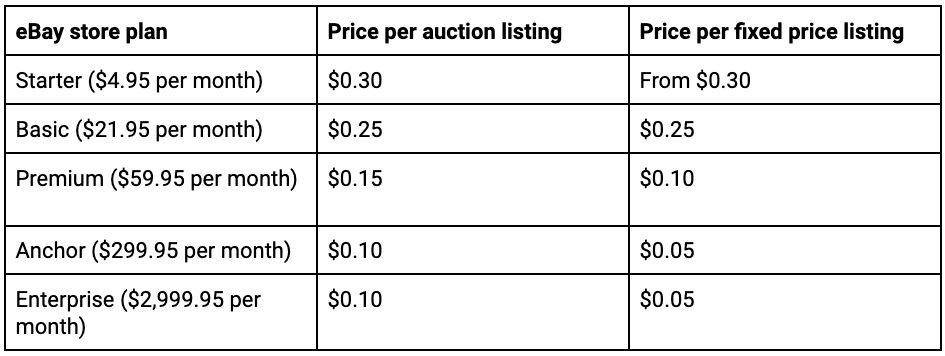
Alongside these store fees, eBay takes a final value fee whenever your item sells. This can be up to 14.35% of the product sale price plus a $0.30 processing fee.
5. Facebook Shops
Over the past few years, Facebook has demonstrated its commitment to social commerce through its assortment of new features. One of those is Shops—a place for users to buy and sell items through the Facebook dashboard.
Almost one in three Facebook users plan to make a purchase through the app this year. To capture those people, create a Facebook storefront:
- Create a Facebook Page for your business.
- Register for Commerce Manager and link the Page.
- Upload your product catalog using an integration with Shopify, BigCommerce, or WooCommerce.
- Customize your storefront with collections, brand colors, and buttons.
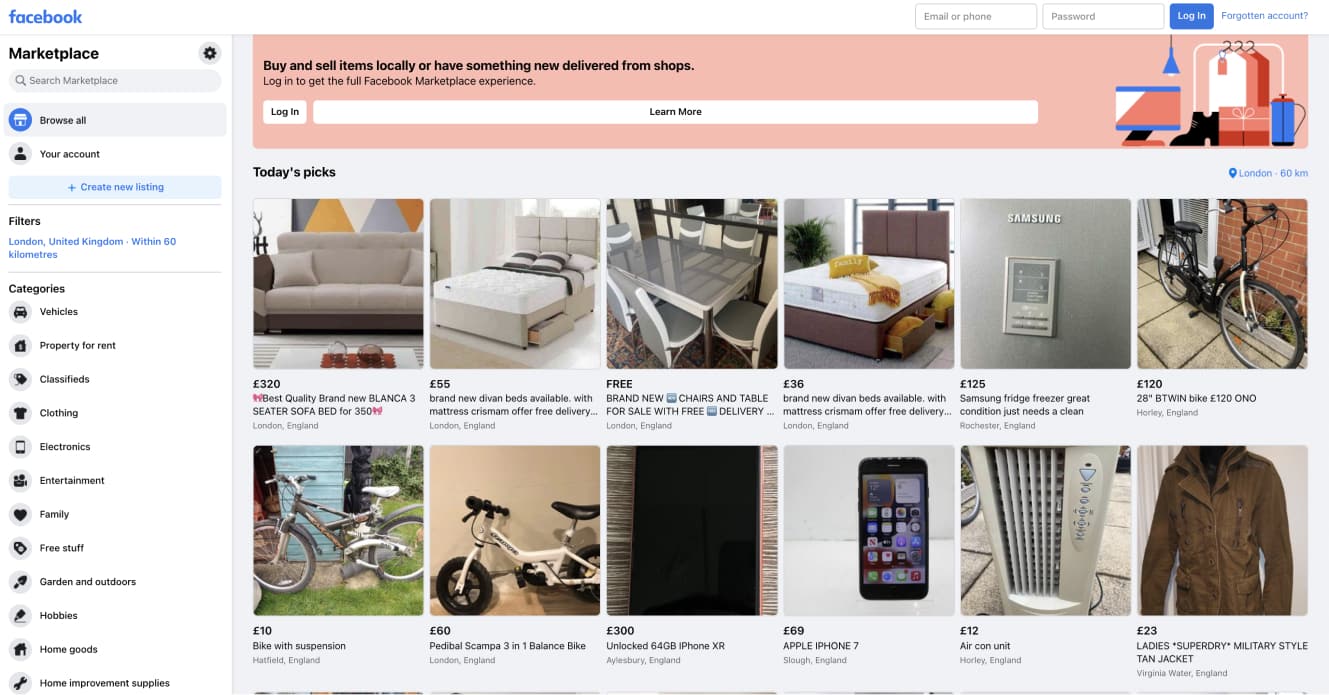
It’s free to open a Facebook and Instagram Shop, though the platform deducts a 5% selling fee or $0.40 flat rate per item sold through its marketplace, whichever is less. This covers the cost of payment processing, taxes, and applies to all product categories.
6. AliExpress
If reaching international customers is high on your priority list, consider selling products through Alibaba. The Chinese holding company served 240 million international customers in last year—a 33% increase from the year prior—through its suite of marketplaces:
- AliExpress, for business-to-consumer selling
- Taobao, for consumer-to-consumer selling
- Alibaba, for business-to-business selling
For this guide, we’ll focus on AliExpress—the best international ecommerce platform if you’re selling to both businesses and customers. To start selling on AliExpress:
- Open a seller account.
- Enter your business details for verification.
- Once approved, add products to AliExpress storefront.

It’s free to open an AliExpress storefront. Just pay a commission fee for each sale you make through the marketplace—ranging from 5-8%, depending on product category.
#cta-paragraph-pb#For those looking beyond marketplaces to sell, check out our guide to the 17 top online selling sites.
Creating a profile on a popular online marketplace to sell your products is the first step in selling multichannel. But there’s more to marketplace success than uploading your products to the first one you see.
Choose the right platform
It’s easy to be seduced by the millions of customers using an online marketplace to discover new products. But if your target market isn’t familiar with the platform, it doesn’t make sense to list your products there.
Confirm your target audience uses a marketplace to purchase new products before applying to sell through one.
Open the marketplaces on your shortlist and do some sense-checking. Is there a product category for your inventory to slot into? How many products fall within it? Well-defined product categories with high product counts might increase competition, but it’s proof that there’s demand for it on the marketplace.
It’s also worth surveying your existing customers to see:
- Whether they consulted a marketplace before buying through your website (and if so, which one)
- If they’d prefer to purchase your products via a marketplace in the future
- Which marketplaces they consult throughout the online shopping journey if they’re unfamiliar with a brand
#cta-paragraph-pb#Similarly, check whether the marketplaces allow businesses to sell your product. Facebook Marketplace, for example, prohibits selling alcohol, supplements, digital products, and tobacco.
Understand profit margins
All marketplaces charge fees for businesses to list inventory. While fees differ from platform to platform, one thing’s for sure: fees eat into your profit margins.
Let’s say you’re selling candles through your ecommerce store. It costs $6 to make the candle, plus $2.99 in shipping fees. Listing the product at $14.99 gives you a healthy $6 profit per candle.
List the same product on a marketplace and listing, currency, and processing fees eat into your margin. You now earn $4.50 profit per candle and need to shift more inventory than you would if it was sold through your own website.
The obvious workaround is to list items at a higher cost when selling through a marketplace. But that’s not the best route—especially when inventory (and their price) is obviously compared to competitors also using the marketplace.
“For most items, we make less margins. For some items though, we have to increase our prices on the marketplace in order to be profitable. And if we just can’t be profitable, we don’t list those specific items.”
— Jeff Moriarty, Marketing Manager at Moriarty’s Gem Art
The deduction in profit is a small price to pay for some small businesses—including James Shalhoub, co-founder of Finn, who says, “Amazon uses variable fees every month, so we take nominal profit losses from using their platform in that sense, but it is made up for by sales.
“It is better, generally speaking, for our customers to buy directly from our website, but these marketplace partnerships do represent significant value to us in exposing our brand on an extremely popular marketplace platform.”
Run competitive analysis
Think about the last online purchase you made. Which factors played a role in your purchase decision? Chances are, price plays a role. Some 94% of online shoppers take time to find the lowest price for a commodity product.
Marketplaces list products from several brands in close proximity to one another. It makes price comparisons easy for customers.
Before deciding on your retail price for each product, run a competitive analysis. What price are comparable products selling for on the marketplace? Does your profit margin allow you to price match (or beat) competitors’ prices?
If you’ve found your product is more expensive, list any features or qualities your product has that warrants the extra price. Use this in your product messaging to prove to marketplace customers it’s worth the investment.
Optimize product listings
Many marketplaces have built-in search engines to allow shoppers to discover products they want to buy. Invest time into optimizing your product listings to reach them.
Several things are taken into consideration when an algorithm decides where to place a product in search results. Some are outside of your control, like reviews and price. But you can control the contents of the product page itself.
Undersun Fitness, for example, sells on both its DTC ecommerce website and Amazon. Product listings on the marketplace have an optimized:
- Product title. Primary keywords like “exercise equipment” and “resistance rubber bands” are in the title of Undersun Fitness’ product listing.
- Product bullet points. Additional keywords like “pull-ups” and “strengthening programs” are included to show use cases for the product.
- Product description. Undersun Fitness combines competitive advantage with Amazon SEO in its product description. Phrases like “eco-friendly” and “durable seamless design” influence the chances of the listing being shown to people searching for “eco-friendly resistance bands.”
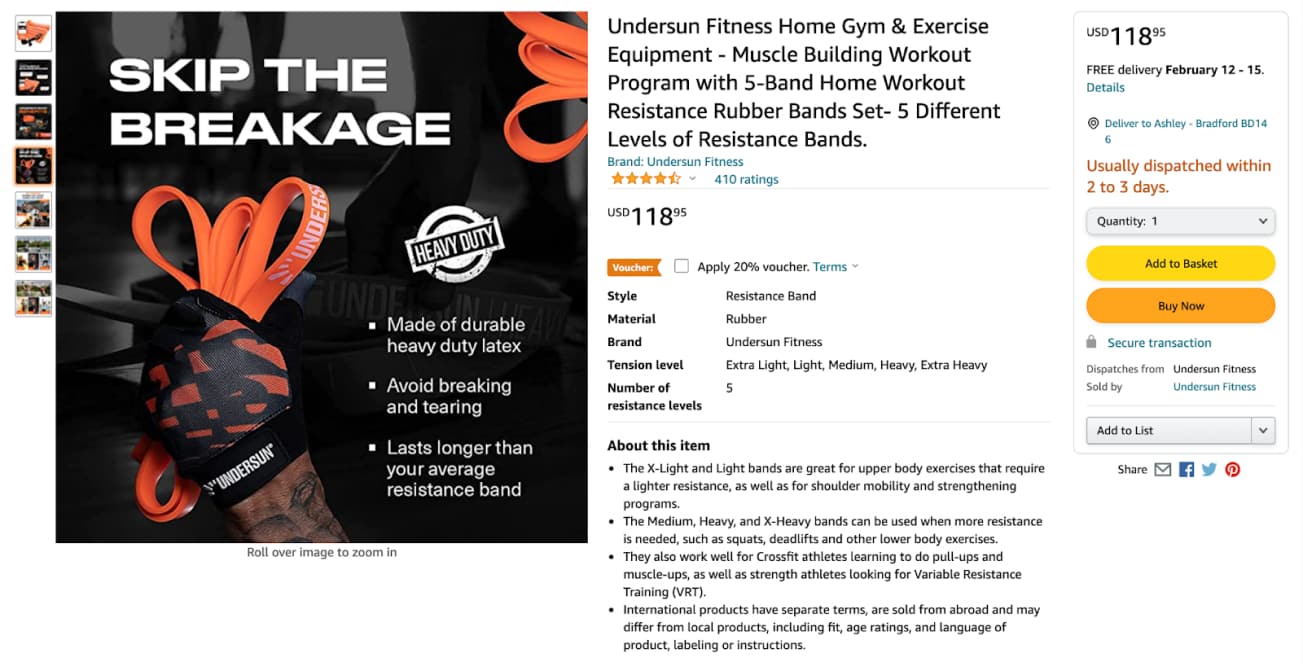
There’s also a variety of images to keep potential customers engaged. Shoppers are able to see the resistance bands in a variety of environments, showing the “heavy duty” label as a competitive advantage.
No wonder its products appear on the first page when Amazon customers search for “home workout rubber bands”:
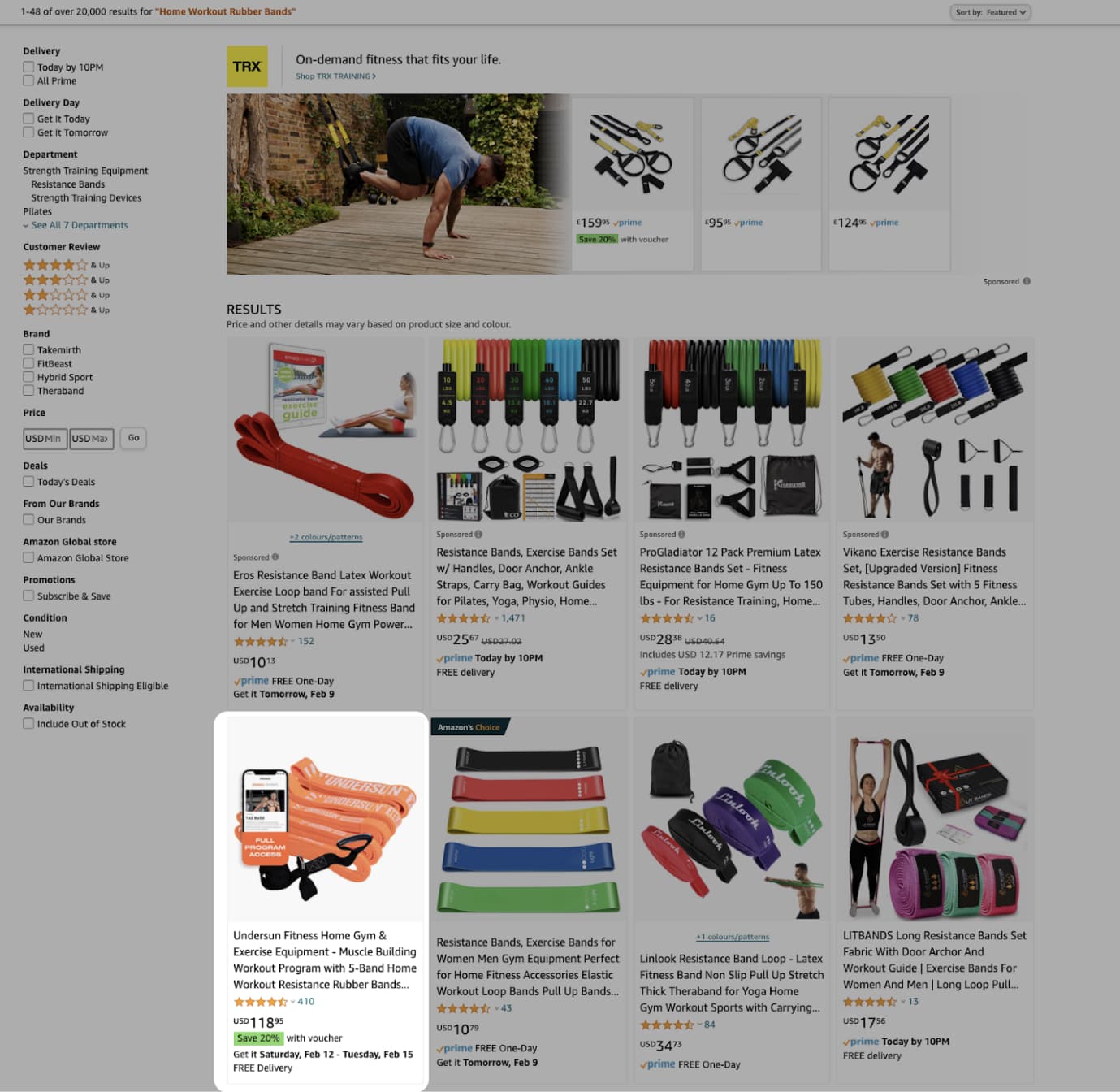
Use an omnichannel inventory management system
If you’re using a handful of online sales channels to promote products, it’s easy for inventory management to go out of the window.
Manually keeping track of omnichannel inventory is a recipe for disaster. You know you’ve got 50 products in stock. But you’ve sold 20 through your online store, 15 through Amazon, and 30 through your Facebook Shop. You’re out of stock and accidentally sold products to customers when they’re unavailable.
Omnichannel inventory management apps like Veeqo, Multiorders, and SKULabs exist to solve this problem.
You’ll easily spot how much sellable inventory you have across each channel. Never sell an out-of-stock product again.
Mitigate risk by having your own online storefront
Selling exclusively through a marketplace leaves you wide open to disaster. Algorithms change; fees change suddenly. Both scenarios have the potential to tank your entire business.
Balance both pure-play and omnichannel ecommerce to mitigate risk.
Have one sales channel you’re in total control of; your own ecommerce website, for example. Nobody can hike up costs to list a product or decide to remove your inventory on a whim.
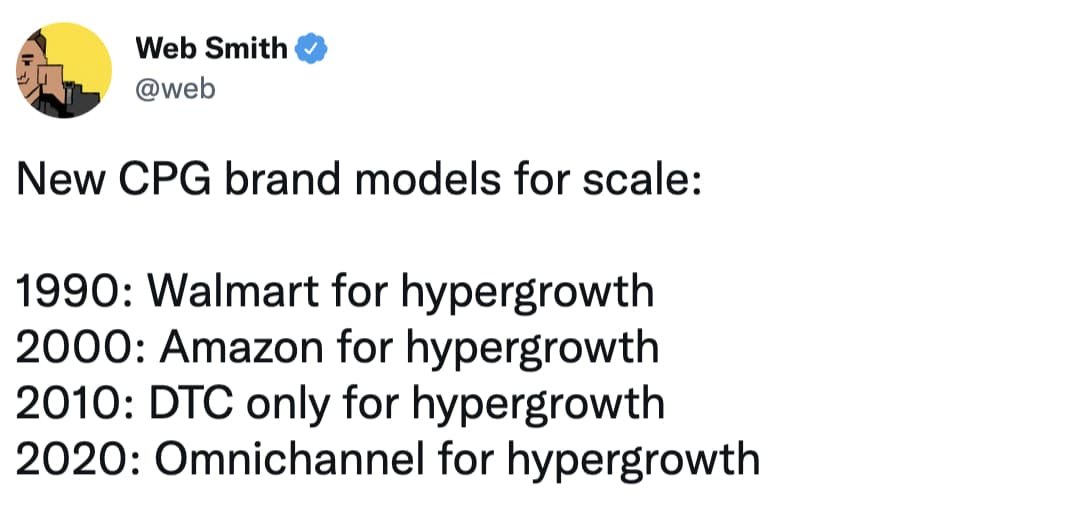
“Make sure you are aware of the risks of selling on a marketplace like Amazon. There is a huge customer base but it comes with many pitfalls.
You don’t own your customer data so can’t build an email list of customers to market to.
You can get banned from the platform with zero warning if you break Amazon’s terms of service with very little recourse available.”
— Sam James, founder of Kenko Tea
Remember: while you expand to other channels as an omnichannel brand, you’ll want an owned ecommerce experience too. Page Builder Advanced helps you differentiate and create a memorable online shopping experience. Learn more.
Should you sell online through marketplaces?
For many online brands, the advantages of selling via marketplaces is second to none. Not only can you tap into an established worldwide customer base, but marketplace commerce has a lower route to entry.
That’s not to say marketplaces should be the only sales channel in your business strategy.
Selling exclusively through a marketplace leaves you at the mercy of their ever-changing algorithms. Mitigate risk by combining those risky sales channels through something you can control: Your own, premium ecommerce site.
#cta-visual-pb#<cta-title>Craft an exceptional owned ecommerce experience<cta-title>See how Shogun Page Builder Advanced can help accelerate your brand’s growth. Learn more

Elise Dopson
Elise Dopson is a freelance writer for B2B commerce and martech companies. When she's not writing, you'll find her in the Peak Freelance community or on Twitter.



